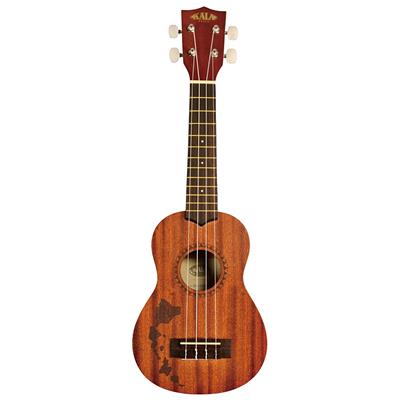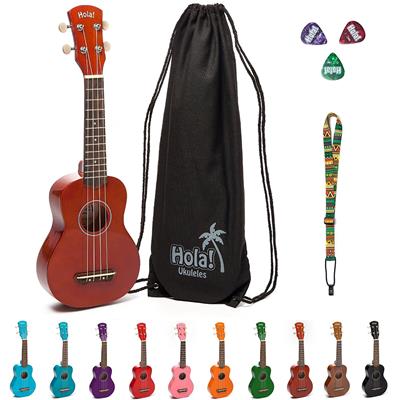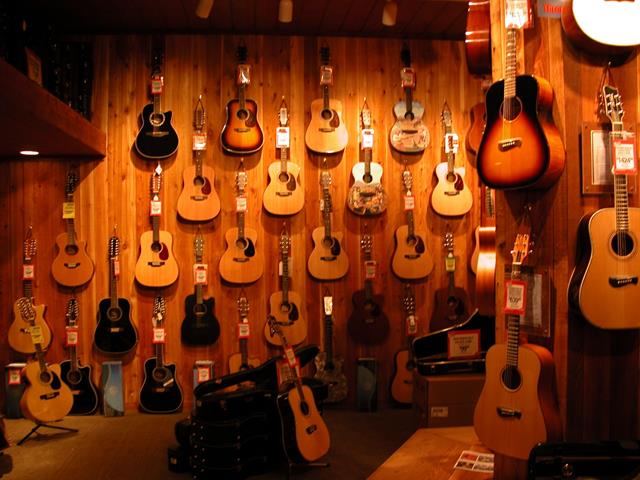Congratulations, you just got your first guitar! Or you are planning on getting one really soon and that is how you ended up on this page. As far-fetched as this claim might sound I hope it is correct because the next step after buying a guitar is buying a tuner, especially if you are a beginner and just learning how to play.
Let’s start from the beginning. To understand why you need a tuner and find the best guitar tuner you should probably know what it is used for… Basically, a tuner is a device that detects the pitch (pitch is how light or low the musical tone is and it is measured in Hertz). Some might think that it is better to learn how to tune with your ear but who are we kidding, if there is a way to ease your transition from knowing squat about guitars to learning a little bit and practicing, you should definitely use it. A tuner is the best and most practical device to help you with your practice.
What’s The Best Guitar Tuner
| Image | Guitar Tuners | ||
|---|---|---|---|
 | D'Addario NS Micro Clip-On Tuner |  (4.8 / 5) (4.8 / 5) | Check on Amazon |
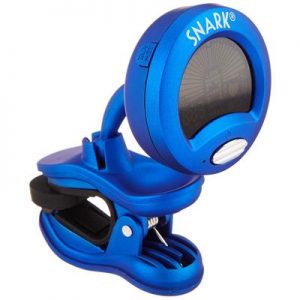 | Snark SN1 Guitar Tuner |  (4.8 / 5) (4.8 / 5) | Check on Amazon |
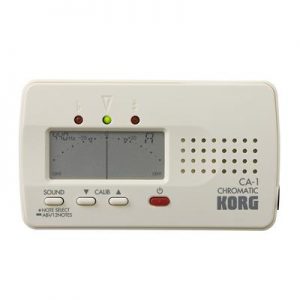 | Korg CA1 Chromatic Tuner |  (4.8 / 5) (4.8 / 5) | Check on Amazon |
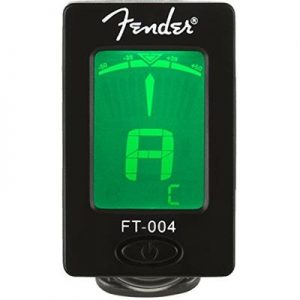 | Fender Clip-On Tuner FT-004 |  (4.8 / 5) (4.8 / 5) | Check on Amazon |
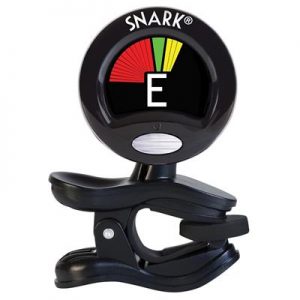 | Snark SN5X Clip-On Tuner |  (4.8 / 5) (4.8 / 5) | Check on Amazon |
D’Addario NS Micro Clip-On Tuner
If you are not just a guitar aficionado but also want to get yourself into banjos or mandolins of other instruments you can use this tuner for all of them, saving up some money. Extremely accurate tuning based on vibration with no cable input required this is a great model for beginners as well as professionals. The tuner’s 360-degree swivel mechanism makes it easy to use on right and left-handed guitars. Plus it has a reversible display so you can clip the tuner on either side of the headstock and rotate the display. The rubberized padded clamp also protects your instrument from any scratches or damage. This is an important issue because there are quite a few tuners that might damage the guitar’s surface if you are not careful with them. This model is also great because it has an auto-off function (low consumption), a calibration range or 430-450hz, and includes a visual metronome (20-270 bpm). It is very compact and lightweight so if you are traveling or do not really have a lot of space this tuner is ideal for you.
Snark SN1 Guitar Tuner
Snark SN1 Guitar Tuner is an easy-to-use, precise, and one of the best clip-on tuners that can be rotated 360 degrees for your convenience and can be clipped on the back or front side, depending on your preference. It also features a tap tempo metronome and pitch calibration (415-466 Hz). It has a high-sensitive vibration sensor for quick tuning. The full-color display makes it easier to read. The clip-on is safe so you do not have to worry about the tuner falling off the guitar headstock. If you are looking for something affordable and dependable, what else can you really be looking for than that?
Korg CA1 Chromatic Tuner
This model is great for high-precision tuning. With 410-480 Hz calibration, it is great for a wide range of pitches and can be adjusted in 1 Hz steps. This model is great for low-register notes containing numerous overtones that are sometimes difficult to tune. A high-sensitivity mic is built-in allowing easy and accurate tuning of acoustic instruments. LCD needle-type meter is great to work with. Also, the size and lightness of this tuner make this model great to travel with which is always an important aspect when it comes to tuners. The batteries on this model last for about 100 hours, making it quite low consumption and the automatic turn-off function ensures that the batteries will last you for a very long time.
Fender Clip-On Tuner FT-004
FT-004 is a compact and lightweight model but the size definitely does not make it less functional. The wide display makes it easy to read with the display going white when it is out of tune and green when it is in tune. It is especially good if you work in dark environments, maybe stage, or if you are unfortunate enough like me, mom’s basement. Okay, I think at this point you have figured out that most of the tuners are compact and light, we are not in the 1950s so tuners will function great if you are looking for basic requirements. So when there are almost close to no features that distinguish one tuner from another what else is there left to look at? For me, it boils down to looks and design (yeah, judge me all you want), but when there are so many models out there you can be picky about anything you want. For me, FT-004 is the best guitar tuner out of all these options.
Snark SN5X Clip-On Tuner
This tuner’s frequency range it tailored for guitars and bass but you can use it for other instruments as well. It has bright display making it easier to read. It also features a microchip that makes the tuning process a little bit faster. You can adjust the tuner display to rotate 360-degrees at any edge and clip it on from back or front side of the headstock so that it is easier for you to view the display. Just a side note, do not keep the tuner clipped on your instrument for long periods of time because it might damage the finish of your instrument.
A guitar tuner is essential for everyone but since beginners are less experienced and would not really know whether their guitar has the right pitch I think tuners are more helpful for them. Just to make sure, this is not an article about “how to tune” but rather which tuner is the best for your needs. So it is basically a pre- “how to tune” article. Since the first tuner which was invented in 1936 there have been a lot of innovations and changes made to them. Luckily for us, instead of the humongous machine of the 1930s that we would break your back with if we decided to hold it, now you have tuners that can fit in our pockets or are even integrated with metronomes. As I have mentioned, the main function of a tuner is to detect pitch but there are a lot of features to take into account when choosing a tuner.
If your tuner works well but you have no idea what it is indicating then there is no point in having one. That is why one of the most important factors in tuners is the display. There are several displays such as needle dial, LED or LCD. For instance, LED light displays are great because they change color to indicate whether you are in the correct pitch or not if you are sharp or flat. Bright displays are especially great if you are working in darker environments. Another important issue is auto-pitch detection. While some tuners require you to set the pitch for each string there are also models that auto-detect your pitch relative to the wanted pitch. If you are looking to buy a tuner and a metronome why not combine the two? A lot of devices have both tuner and metronome, saving you money and space. There are Clip-On tuners that you can attach to the headstock and it will detect the pitch, there are pedal tuners, polyphonic tuners, and tuning apps. My favorite one out of all of them is a clip-on tuner. Clip-ons are often the most affordable and practical ones that can fit into your pocket. Then there are app tuners which are mostly free and available either online or for download on your phone. One big issue with app tuners is that mics on your phone or computer are not designed to have high capacity in distinguishing sounds so they are not as accurate as actual tuners if your tuner just broke this can be a temporary fix but I would not suggest solely depending on apps, especially since the most tuners do not cost that much.
Conclusion
Maybe at some point, you might have thought that a guitar tuner is just a tuner and there is no need in wasting too much time or money on it. I hope at this point you have realized that the tuner basically is your ear when you are playing. It is essential for your learning and playing process and should never be neglected. I would say that most guitar tuners do a fairly good job (and I am saying “most”). What matters is that you know your preferences and whether you want any added features. For instance, maybe get a display with bright colors if you are going to be using it in darker environments or are better at visual understanding. Get a clip-on or small tuner if you are traveling and need to minimize the amount or volume of things you are carrying so you do not break your back because you have been carrying around all your instrument and accessories for hours. Maybe get a tuner that is also a metronome, or get an app tuner if you do not want to spend money on one right now. But to be honest it should be a temporary solution because apps will not really be as good as actual tuners and for Christ’s sake, they do not cost more than that Chipotle lunch you had when you were too bored and lazy to make dinner. In any case, I hope you are closer to finding the best guitar tuner for your needs or have a better understanding of your needs after this guide and good luck!


